1. NCD Risk Factor Collaboration (NCD-RisC). Worldwide trends in hypertension prevalence and progress in treatment and control from 1990 to 2019: a pooled analysis of 1201 population-representative studies with 104 million participants. Lancet. 2021; 398(10304):957–980. PMID:
34450083.
2. US Preventive Services Task Force. Krist AH, Davidson KW, Mangione CM, Cabana M, Caughey AB, et al. Screening for hypertension in adults: US preventive services task force reaffirmation recommendation statement. JAMA. 2021; 325(16):1650–1656. PMID:
33904861.
3. GBD 2017 Risk Factor Collaborators. Global, regional, and national comparative risk assessment of 84 behavioural, environmental and occupational, and metabolic risks or clusters of risks for 195 countries and territories, 1990-2017: a systematic analysis for the Global Burden of Disease Study 2017. Lancet. 2018; 392(10159):1923–1994. PMID:
30496105.
4. Williams B, Mancia G, Spiering W, Agabiti Rosei E, Azizi M, Burnier M, et al. 2018 ESC/ESH guidelines for the management of arterial hypertension. Eur Heart J. 2018; 39(33):3021–3104. PMID:
30165516.
5. Unger T, Borghi C, Charchar F, Khan NA, Poulter NR, Prabhakaran D, et al. 2020 International Society of Hypertension global hypertension practice guidelines. Hypertension. 2020; 75(6):1334–1357. PMID:
32370572.
6. Padwal R, Campbell NR, Schutte AE, Olsen MH, Delles C, Etyang A, et al. Optimizing observer performance of clinic blood pressure measurement: a position statement from the Lancet Commission on Hypertension Group. J Hypertens. 2019; 37(9):1737–1745. PMID:
31034450.
7. Clement DL, De Buyzere ML, De Bacquer DA, de Leeuw PW, Duprez DA, Fagard RH, et al. Prognostic value of ambulatory blood-pressure recordings in patients with treated hypertension. N Engl J Med. 2003; 348(24):2407–2415. PMID:
12802026.
8. Dolan E, Stanton A, Thijs L, Hinedi K, Atkins N, McClory S, et al. Superiority of ambulatory over clinic blood pressure measurement in predicting mortality: the Dublin outcome study. Hypertension. 2005; 46(1):156–161. PMID:
15939805.
9. Niiranen TJ, Mäki J, Puukka P, Karanko H, Jula AM. Office, home, and ambulatory blood pressures as predictors of cardiovascular risk. Hypertension. 2014; 64(2):281–286. PMID:
24842916.
10. Oh YK, Chin HJ, Ahn SY, An JN, Lee JP, Lim CS, et al. Discrepancies in clinic and ambulatory blood pressure in Korean chronic kidney disease patients. J Korean Med Sci. 2017; 32(5):772–781. PMID:
28378550.
11. Viera AJ, Lingley K, Hinderliter AL. Tolerability of the Oscar 2 ambulatory blood pressure monitor among research participants: a cross-sectional repeated measures study. BMC Med Res Methodol. 2011; 11(1):59. PMID:
21524301.
12. Huang QF, Yang WY, Asayama K, Zhang ZY, Thijs L, Li Y, et al. Ambulatory blood pressure monitoring to diagnose and manage hypertension. Hypertension. 2021; 77(2):254–264. PMID:
33390042.
13. Castaneda D, Esparza A, Ghamari M, Soltanpur C, Nazeran H. A review on wearable photoplethysmography sensors and their potential future applications in health care. Int J Biosens Bioelectron. 2018; 4(4):195–202. PMID:
30906922.
14. Joung J, Jung CW, Lee HC, Chae MJ, Kim HS, Park J, et al. Continuous cuffless blood pressure monitoring using photoplethysmography-based PPG2BP-net for high intrasubject blood pressure variations. Sci Rep. 2023; 13(1):8605. PMID:
37244974.
15. Liu C, Zheng D, Griffiths C, Murray A. Comparison of repeatability of blood pressure measurements between oscillometric and auscultatory methods. Comput Cardiol. 2015; 42:1073–1076.
16. Lewis PS. British and Irish Hypertension Society’s Blood Pressure Measurement Working Party. Oscillometric measurement of blood pressure: a simplified explanation. A technical note on behalf of the British and Irish Hypertension Society. J Hum Hypertens. 2019; 33(5):349–351. PMID:
30926901.
17. Allen J. Photoplethysmography and its application in clinical physiological measurement. Physiol Meas. 2007; 28(3):R1–39. PMID:
17322588.
18. Slapničar G, Mlakar N, Luštrek M. Blood pressure estimation from photoplethysmogram using a spectro-temporal deep neural network. Sensors (Basel). 2019; 19(15):3420. PMID:
31382703.
19. Hosanee M, Chan G, Welykholowa K, Cooper R, Kyriacou PA, Zheng D, et al. Cuffless single-site photoplethysmography for blood pressure monitoring. J Clin Med. 2020; 9(3):723. PMID:
32155976.
20. Elgendi M, Fletcher R, Liang Y, Howard N, Lovell NH, Abbott D, et al. The use of photoplethysmography for assessing hypertension. NPJ Digit Med. 2019; 2:60. PMID:
31388564.
21. Picone DS, Deshpande RA, Schultz MG, Fonseca R, Campbell NR, Delles C, et al. Nonvalidated home blood pressure devices dominate the online marketplace in Australia: major implications for cardiovascular risk management. Hypertension. 2020; 75(6):1593–1599. PMID:
32275193.
22. Wang L, Xian H, Guo J, Li W, Wang J, Chen Q, et al. A novel blood pressure monitoring technique by smart HUAWEI WATCH: a validation study according to the ANSI/AAMI/ISO 81060-2:2018 guidelines. Front Cardiovasc Med. 2022; 9:923655. PMID:
36304535.
23. Schoettker P, Degott J, Hofmann G, Proença M, Bonnier G, Lemkaddem A, et al. Blood pressure measurements with the OptiBP smartphone app validated against reference auscultatory measurements. Sci Rep. 2020; 10(1):17827. PMID:
33082436.
24. Armstrong MK, Schultz MG, Picone DS, Black JA, Dwyer N, Roberts-Thomson P, et al. Brachial and radial systolic blood pressure are not the same. Hypertension. 2019; 73(5):1036–1041. PMID:
30905194.
25. Picone DS, Schultz MG, Otahal P, Aakhus S, Al-Jumaily AM, Black JA, et al. Accuracy of cuff-measured blood pressure: systematic reviews and meta-analyses. J Am Coll Cardiol. 2017; 70(5):572–586. PMID:
28750701.
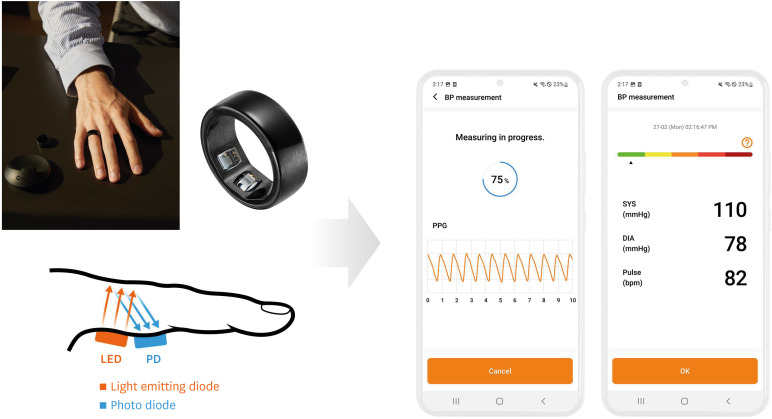
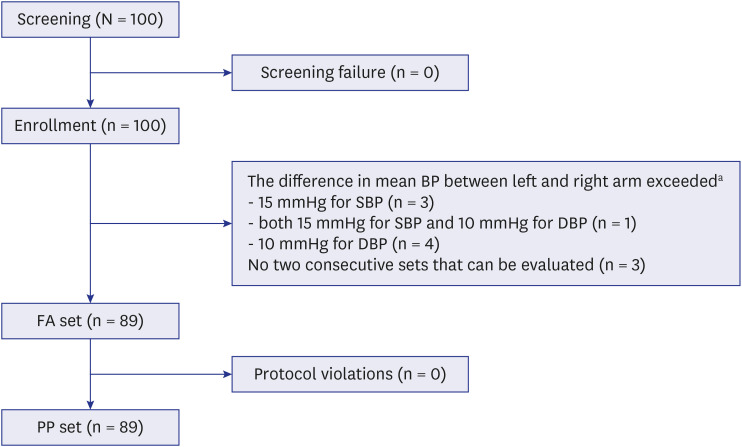
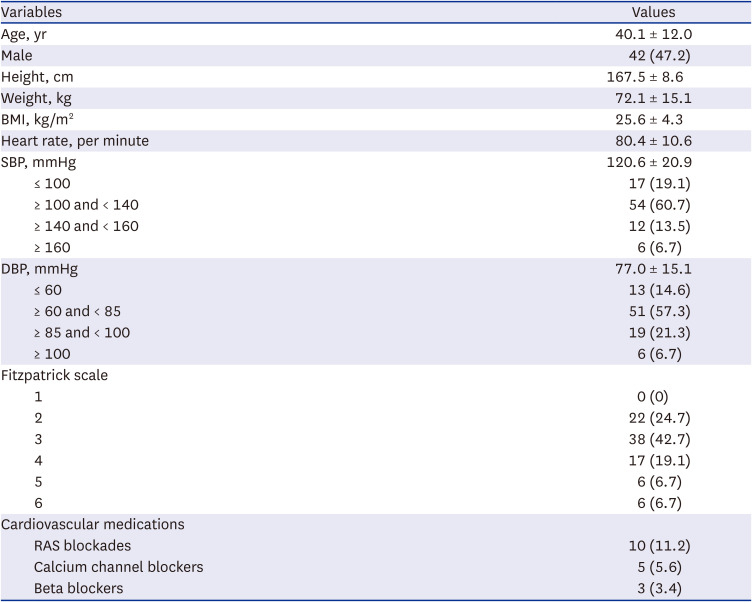


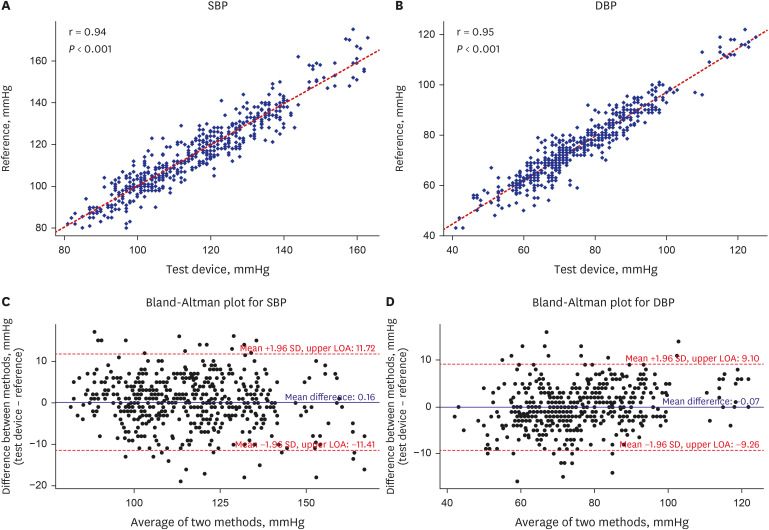




 PDF
PDF Citation
Citation Print
Print



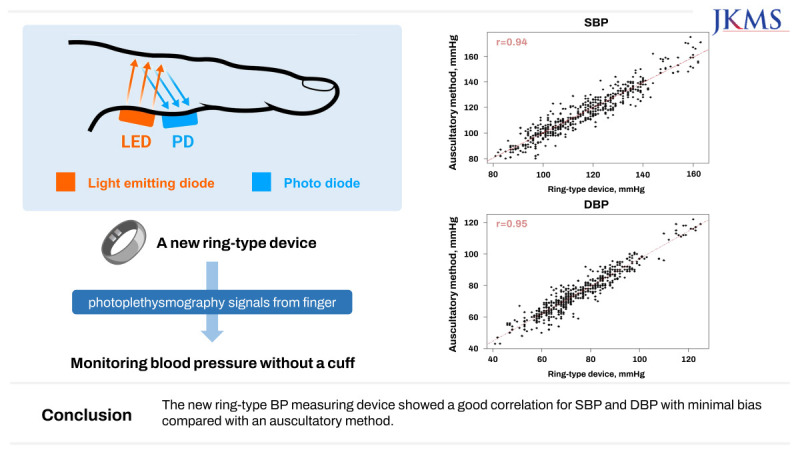
 XML Download
XML Download